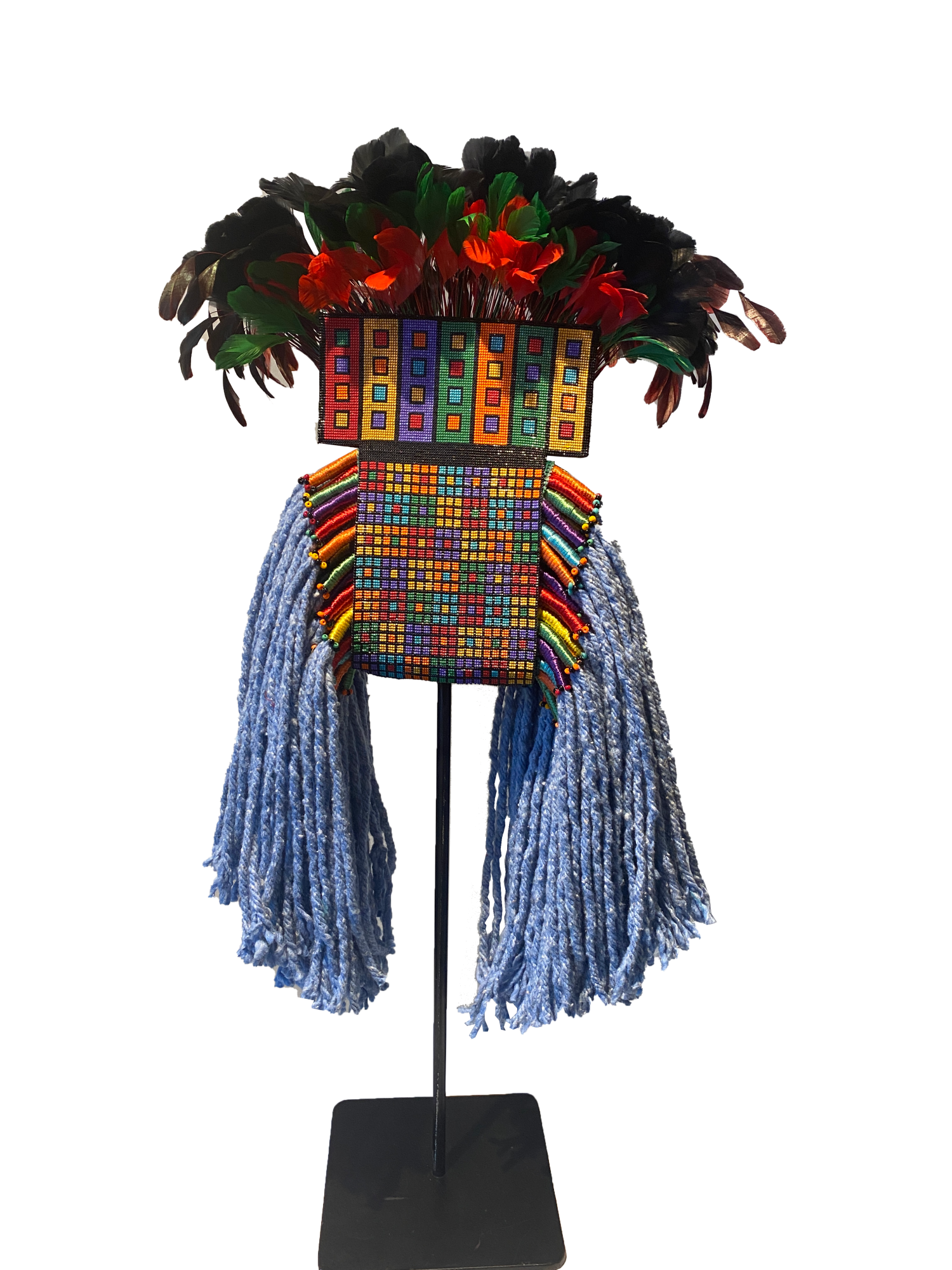With Every Fiber
The new group exhibition at the Pelham Art Center, With Every Fiber, is testimony to the infinity of creativity. Fiber art uses textiles such as fabric, yarn, and natural and synthetic fibers. The focus is both on the materials and the hand labor involved. Like all art forms, fiber art communicates some form of message, emotion or meaning beyond the literal use of the materials.
Norwegian born, Brooklyn-based curator and artist Anki King assembled the fiber art of seven women of diverse heritage and artistic styles. They are united in one thing: the materials used. This exhibit presents the artists Victoria Idongesit Udondian, Mary Ann Lomonaco, Joy Curtis, Ruby Chishti, Mary Tooley Parker, Jessica Lagunas and Liz Whitney Quisgard.
The juxtaposition of their rich collective work is at once stylistically divergent, yet harmonious as King managed to bring balance to this exhibition. Each piece emanates singularly while connecting to the polyphonic collective. King explained the thematic, “Like with my own work, this is a sorely emotional or loved-based collection. I don’t make plans. I react to the art, and love it and thereby invite the artist. There is something so tactile and familiar. In the new ways it is used, it brings you to an almost confused state that is very intriguing to me. You recognize the fabrics and how they are used in new surprising ways.” She added: “With every fiber there is passion. The artists give everything they have to say.”
The result of what they had to say is a show, in which fiber exudes power with sharp perspective.
Visitors are greeted by a massive installation by Victoria Idongesit Udondian, a Nigerian born artist. She is a Guggenheim fellow who has studied at the Columbia School of Arts and now resides in New York. Her dramatic sculpture, titled Onile-Gogoro, consists of dark, twisting, meandering tentacles reaches from floor to ceiling. She used repurposed clothes, fabric, wire, metal, rod, resin and bicycle tubes to create a commanding sculpture with distinct similarities to African dreadlocks, seemingly questioning concepts of beauty and the aspect of what Afro-hair symbolizes culturally.
Mary Ann Lomonaco is displaying a series of five elaborate and innovative headdresses with distinct tribal allusions. She ingeniously starts with cotton kitchen mops that she dyes and decorates colorfully with intricate glass bead work, feathers and other objects like grommets and soda can tabs. The headdresses, bold in both detail and design, each are reminiscent of a prancing Amazon rainforest bird.
Two hanging fabric sculptures by Brooklyn-based artist Joy Curtis are earthy and organic, even skeletal, both in essence and tone. Her freeform and flowing pieces are generously saturated in vivid dyes of indigo, Osage orange, cochineal, walnut, madder and procion. She twists cotton, intermingled with wax, metal, spandex, sea sponges and raffia to create striking effect. The sculptures compel the viewer’s glance with their radiating colors and imaginative shapes.
Ruby Chishti, a Pakistani-American artist, created a series of sculptures with recycled fabric, thread, wire mesh and other materials. She plays with elements of disorder with purposely raggedy fabric and subdued colors, yet manages to exude warmth and harmony in the seeming disorganization. There is visual conflict between apparent chaos and the essence of domiciles and dwellings, in some way reminiscent of dollhouses or hives, layered and cavernous, perhaps projecting a longing for belonging.
Mary Tooley Parker pays homage to the African American women quilters of Gee’s Bend—a small, remote, black community in Alabama. Gee’s Bend is an inland island surrounded on three sides by the Alabama River, where these women have created hundreds of highly unique quilt masterpieces that are now famous. Yet, the individual quilter artists are virtually unknown. Parker now honors them by depicting them individually, stitching their portraits in handsome hooked tapestries.
Jessica Lagunas, originally from Guatemala, is showing a series of unique small pin loom hair weave tapestries, made of the artist’s own hair, silk thread, and brass rods. The finely weaved, small rectangular pieces have a Zen like, ethereal quality, with diverse patterns. The artists reveals herself in a previous quote, “I question our obsession with body image and standards of beauty by playing along with women’s beauty rituals, performing them in exaggerated ways.” The viewer would perhaps be hard pressed to make that connection as the artist lets the pieces speak for themselves.
The exhibition also displays a wall full of 91-year-old Liz Whitney Quisgard’s Hundreds of Circles project, which started in 2012 and is ongoing. The work consists of what she calls “yarn with bling.” When the artist was asked to explain her own art she aptly stated, “What you see is what you get.” Quisgard’s colorful, whimsical pieces, made mostly of acrylic yarn, accentuate the power of the ‘With Every Fiber’ show at the Pelham Arts Center. Her work simply lightens the load, brings joy, happiness and fun to this exhibition, which is a welcomed reprieve during these hard pandemic times.
With Every Fiber is on view in-person and online through April 3. Upcoming virtual studio tours by exhibiting artists include Ruby Chishti (March 11), Mary Tooley Parker (March 25) and Jessica Lagunas (April 8).







